

Organic and ChemBio Seminar
Friday, April 14, 3:30 - 4:30pm, WEL 2.122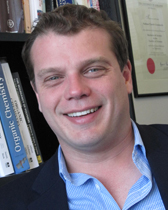
Professor
Northwestern University
Abstract: In this presentation, we will describe the organization of functional peptides as densely arrayed sidechains on polymer scaffolds as leading to a new class of proteomimetic material. We call these materials, Protein-Like Polymers (PLPs), wherein peptide-brush polymers are composed from monomers, each containing a peptide side-chain. Peptides organized in this manner imbue polymers with a range of functional qualities inherent to their specific sequence. Therefore, polymers otherwise lacking bioactivity, or responsiveness to stimuli, once linked to a peptide of choice, can now bind proteins, enter cells and tissues, have controlled and switchable biodistribution patterns, and exhibit exceptionally long half lives in circulation (days to weeks). Synergistically with the peptide influencing the polymer, the polymer enforces changes in peptide activity and function by virtue of packing and constraining the peptide. For example, the scaffold can protect the peptide from proteolysis, change the pharmacokinetic profile of an intravenously injected peptide, increase the cellular uptake of an otherwise cell impermeable therapeutic peptide, or change peptide biological activity. Moreover, in addition to the sequence-controlled peptides (generated by solid phase synthesis) the polymer can carry its own sequence-dependent information, especially through living polymerization strategies allowing well-defined blocks and terminal labels (dyes, contrast agents, charged moieties). Hence, the two elements, peptide and polymer, cooperate to yield materials with unique function and properties quite apart from each alone. We will describe the development of synthetic strategies for accessing this class of biomolecule polymer conjugate, discuss their physicochemical and structural properties and will describe their utility in a range of settings, including as a new type of therapeutic modality. We will highlight some examples of biomedical applications including their ability to engage critical intracellular protein-protein interactions driving neurodegenerative disease and cancer.
Analytical & Physical Seminar
Thursday, April 13, 3:30 - 4:30pm, WEL 2.122
Professor
University of Illinois
Abstract: In this talk, we discuss results relevant to high concentration (HC) and solid state electrolytes and their use in batteries. These electrolytes are evaluated by using vibrational spectroscopy, electrochemical, and force measurements. We show the presence of a surface-confinement effect in the HC electrolytes and the presence of layers, the structure of which changes with applied potential. The presence of divalent or diluent molecules in the electrolyte alters the layering effect. HC electrolytes are utilized in cells with different cathode chemistries. HC electrolytes used with Li2S cathodes is beneficial for achieving high active material utilization, maintaining intimate interfacial contact, and providing buffer space for volume contraction and expansion. The HC-enabled Li2S cell exhibited superior cycling performance compared to the solid-state cells in terms of Li2S loading, Li2S utilization, and cycling stability. HC electrolytes are used in conjunction with specific Li and Na metal surface treatments to enable high cyclabiity. Finally, HC electrolytes are used to enable certain organic cathodes.
Inorganic and ChemBio Seminar
George and Pauline Watt Centennial Lectureship
Wednesday, April 12, 3:30 - 4:30pm, WEL 2.122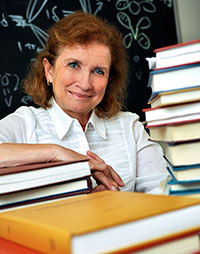
Professor
Texas A&M University
Abstract: There is broad significance of sulfur-based reactivity in transition metal dithiolates as analogs of the dinickel active site of Acetyl coA Synthase as well as in several other S-bridged active sites in the bioorganometallic realm of catalysis. Simplified models of the biological Cys-Gly-Cys N2S2 tight binding sites have been studied in our laboratory, using dianionic bis-mercaptoethane-diazacycles and open chain analogues, resulting in neutral MN2S2 complexes with M = NiII, [Fe(NO)]2+, or {Fe(NO)}7 , and [Co(NO)] 2+, or {Co(NO}8. Optimal orientation of lone pairs on sulfurs of the cis-dithiolates provides impressive illustrations of stereo-control of the fixed exogenous metals, rendering designed clusters and descriptions of the MN2S2 metalloligands as referents of diphosphines or bipyridine, however with expanded chemical, stereochemistry, and electrochemical versatility. With such metallodithiolate ligands we have assembled a matrix of dissymmetric heterobi-metallics using η5-C5H5FeII and {Fe(NO)2}9 as receiver units for comparisons in the study of the hydrogen evolution reaction, HER. The paramagnetic and redox active N2S2Fe(NO), has further proven to be a spin probe ligand in the construction of a Ni—Fe complex, where Ni is imbedded within a redox-active dithiolene ligand. A more recent study establishes long-range antiferromagnetic coupling between these spin probe ligands bridged by the Group 10 metal dications, Fe-M-Fe, showing that J values for superexchange vary in the order Ni(II) < Pd(II) << Pt(II). The metallodithiolates as bidentate ligands represent a powerful new class of construction elements in inorganic/bioinorganic synthesis.
Organic and ChemBio Seminar
Distinguished Alumni Lecture
Friday, April 7, 3:30 - 4:30pm, WEL 2.122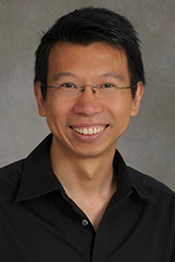
Associate Professor
Stony Brook University
Abstract: Ngai lab aims to establish new molecular editing and assembling technologies for rapid synthesis and late-stage functionalization of biorelevant molecules. Our research efforts have been directed to exploit visible-light-induced excited-state catalysis, a process that involves at least one photoexcited catalytic species, to address unmet challenges in organic synthesis. In this seminar, I will cover our efforts in the development of (i) excited-state copper catalysis in carbonyl chemistry, (ii) novel fluorinating reagents for late-stage, direct C-H tri- and difluoromethoxylation of aromatic compounds, and (iii) site-selective modification of carbohydrates & beyond. Since functionalized carbonyl compounds, fluorinated molecules, and carbohydrates are ubiquitous in bioactive compounds, our chemistry will allow convenient access to and studies of new functional molecules to aid the discovery of new therapeutics, agrochemicals, and imaging agents.
Inorganic and ChemBio Seminar
Wednesday, April 5, 3:30 - 4:30pm, WEL 2.122
Professor
Trinity University
Abstract: Superoxide is a highly toxic byproduct of aerobic respiration that is typically degraded by superoxide dismutases (SODs) into O2 and H2O2 before it can cause extensive cellular damage. Nickel containing superoxide dismutase (NiSOD) is found primarily in marine microorganisms, and owing to horizontal gene transfer, is the most widely expressed SOD on the planet. NiSOD utilizes a formal NiIII/NiII redox couple to facilitate catalytic O2– disproportionation. In the reduced state NiSOD contains NiII in a square planar N2S2 coordination environment with ligands provided by two Cys S-atoms an amidate backbone N-atom from Cys2 and the N-terminal amine N-atom from His1. Upon oxidation the His1 imidazole coordinates to the NiIII-center. It has been demonstrated that in its reduced form, the NiSOD active site possess at least one protonated coordinated cysteinate sulfur atom, forming the NiII-S(H+)-Cys moiety. The role of the protonated coordinate cysteinate in NiSOD catalysis, if any, is unknown. In this talk we will address the necessity of cysteinate protonation for SOD catalysis by NiSOD through the lens of various computational methods including valence bond theoretical methods and an analysis of the topology of the wavefunction derived from density functional methods. It will be shown that cysteinate protonation enhances the covalency of the Ni-S bond and drives O2– reduction. It will also be proposed that a proton transfer relay from the NiII-S(H+)-Cys moiety to a coordinated O2– ligand is vital in the reduction process.
Organic Seminar
Monday, April 3, 3:30 - 4:30pm, WEL 2.122
Assistant Professor
University of Pittsburgh
Abstract: We describe the discovery and development of catalytic α-C–H functionalization reactions of simple unsaturated hydrocarbons, including alkynes, alkenes, and allenes, using cationic cyclopentadienyliron(II) dicarbonyl complexes. These complexes enable the development of a new mode of catalytic C–H functionalization in which metal coordination to a π-bond facilitates the deprotonation of a neighboring C–H bond. The implementation of this strategy resulted in mild, functional group tolerant, and regioselective transformations for the coupling of unsaturated hydrocarbons with aldehydes, iminiums, and other readily available or easily accessed carbon electrophiles. Investigations into the reaction mechanism and the discovery and optimization of new ligand systems are discussed. Extensions of this approach to other transition metal catalysts for stereoselective transformations are also described.
Organic and ChemBio Seminar
Friday, March 31, 3:30 - 4:30pm, WEL 2.122
Professor
NYU
Abstract: Protein-protein complexes are difficult targets for inhibitor design, and therefore, offer a testing ground for new approaches. We are developing a rational design approach that begins by mimicry of protein interfaces by constrained peptides and peptidomimetics. However, direct mimicry of protein interfaces often leads to weak inhibitors. We overcome this inherent limitation by designing nonnatural side chain functionality. The first part of this presentation will discuss the application of our approach to the discovery of inhibitors for oncogenic Ras. The second part of the talk will focus on a rational design approach to develop catalysts for peptide bond formation. This work aims to address the significant challenge of excess reagent use in peptide synthesis.
Organic Seminar
Friday, March 17, 3:30 - 4:30pm, WEL 2.122
Research Fellow
BASF
Abstract: Global deaths due to pathogens, that are resistant to all available drugs, are expected by WHO to increase over 10-fold in the next decades, to over 10 million per year. As the commercial value for new anti-infective drugs is still very low, there are staggering few activities in this area. In a philanthropic project, BASF Agro Research is using their knowhow and compound libraries to initiate new projects in anti-infective research in cooperation with academic groups. Several examples for the successful interplay between antimalarial, antibiotic and herbicide research will be presented, resulting in so far >20 publications in this area.
Inorganic/ChemBio Seminar
Thursday, March 9, 3:30-4:30 PM, ZOOM
Editor-in-Chief, Science Family of Journals
Abstract: Small molecule drugs containing 1,2,4-triazole can be excellent inhibitors of lanosterol demethylase, a fungal enzyme responsible for cell wall synthesis. Inhibition of lanosterol demethylase leads to anti-fungal activity. However, inhibitors based on 1,2,4-triazole are also inhibitors of CYP3A4 and other liver P450 enzymes, leading to a high degree of toxicity and drug-drug interactions. Replacement of the 1,2,4-triazole with a moiety that binds less tightly to the iron atom in the enzyme can lead to greater specificity and safety. The first drug demonstrating this principle, VIVJOA, has recently been approved.
Science Policy Seminar
Thursday, March 9, 12:00-1:00 PM, ZOOM
Editor-in-Chief, Science Family of Journals
Abstract: The COVID-19 pandemic revealed very quickly to scientists that the public has reached a point where picking and choosing the parts of science to act on is effortless. Many scientists have been mystified as to how this happened, but historians and communications scholars have been laying out these problems for decades. COVID-19 denial, climate denial, and many other policy issues follow a pattern that stretches all the way back to the Scopes trial in the 1920s. Meanwhile, science has refused to invest in the contextualization of science in a way that would allow for processing scientific findings. These forces will be described along with some ideas about long-term solutions.
Analytical, Physical and ChemBio Seminar
Wednesday, March 8, 3:30 - 4:30pm, WEL 2.122
Professor
University of Utah
Abstract: In the last 5 years, there have been extensive studies and new materials designed for interfacing biocatalysts with electrode surfaces for applications in sensing, energy storage and electrification of industry. This talk will discuss electroanalytical techniques for studying biocatalysis, including both mediated enzymatic bioelectrocatalysis and direct enzymatic bioelectrocatalysis. The talk will discuss electrode materials innovation for interfacing complex proteins with electrode surfaces for facile electron transport as well as using them for electrosynthesis of ammonia as well as other value-added products (i.e. chiral amines, chiral imines, polymers, etc.) with a focus on sustainability. Finally, this talk will discuss the use of synthetic biology for microbial bioelectrosynthesis of ammonia and other value-added products, as an alternative to enzymatic bioelectrocatalysis.
Organic Seminar
Monday, March 6, 3:30 - 4:30pm, WEL 2.122
Assistant Professor
University of Tennessee Knoxville
Abstract: The exploration of unique architectural elements is critical for advancing our fundamental understanding of polymer structure-property relationships and accessing next-generation materials. As such, expanding the range of functional groups that can be incorporated within polymers is paramount for developing advanced soft materials. The precise installation of reactive motifs, in particular, could be leveraged to access tunable (or otherwise functional) polymers with bespoke properties. Here, we will explore a variety of novel materials that are decorated with underutilized functional groups in materials science. For example, cumulenes are valuable synthetic handles that are largely absent from macromolecular architectures. Metallocarbenes, which participate in numerous chemical transformations, are also underexplored functional groups in polymer chemistry. We found that both motifs could be incorporated into polymers with good fidelity, and the resultant materials exhibited various stimulus-responsive behaviors (e.g.,network formation or CO release). We will also explore how new methodological developments can enable iterative modifications to realize functionalization and/or degradation of various polymers. For example, Suzuki chemistry can be harnessed to decorate polymers with reactive aryl aldehydes (which can undergo an array of subsequent modifications). Conversely, electrochemical editing of polymers (via radical cation pathways) can open new opportunities for polymer degradation and/or functionalization.
W. Albert Noyes, Jr. Distinguished Visiting Lectureship
Analytical & Physical Seminar
Thursday, March 2, 3:30 - 4:30pm, WEL 2.122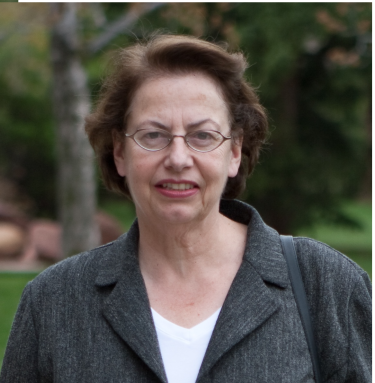
Professor
University of Colorado Boulder
Abstract: Inspired by atmospheric measurements, which have established that atmospheric chemistry occurs in many phases and at interfaces, my group explored the unique reaction environments presented by planetary atmospheres. In this presentation, the special morphological and chemical properties of organic films on aqueous solutions will be discussed with reference to atmospheric aerosols, sea surface microlayers, cloud and fog droplets. The surface of water on aqueous drops and at the sea surface provides a special and unique reaction environment with qualitatively different thermodynamic and kinetic properties from bulk aqueous solutions. Examples will be presented of chemistry initiated at the water surface leading to increase in the chemical complexity of the system. Solar radiation is the largest source of energy on both the contemporary and early Earth. Multiphase photochemical mechanisms will be discussed by which a-keto acids react in aqueous environments to form organic radicals, which then recombine to form larger, more complex lipids. The relevance of this chemistry to reactions in the contemporary atmosphere as well as chemistry that may have occurred prebiotically, in the absence of enzymes on ancient Earth, will be discussed.
Organic Seminar
Monday, February 27, 3:30 - 4:30pm, WEL 2.122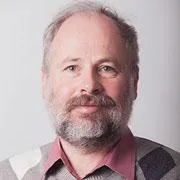
Associate Professor
Tel Aviv University
Abstract: While the field of organocatalysis underwent fast development in the past decades, many organocatalytic systems still suffer from low activity or selectivity. The low activity can be sometimes counterbalanced by increasing the reaction time or the catalyst loading. The impaired selectivity is, however, irreparable. A new design of nucleophilic organocatalysts, embracing an active site surrounded by long linear or branched tails, which can potentially control the access of substrate molecules to the catalytic core, was explored in our group with the aim of achieving site-selectivity in chemical transformations of diol or polyol amphiphilic substrates. Thus, in an acylation of a model diol substrate with butyric anhydride, the use of a nucleophilic catalyst, particularly multibranched catalyst with the imidazole site in the core, enabled a remarkable shift of the site-selectivity from the polar alcohol site, preferred in reference non-catalyzed or base-promoted reactions, to the apolar site. Elucidation of the sources of the site-selectivity, observed in each case, was achieved by performing a complimentary set of substrate-competitive acylations of polar and apolar mono-alcohol substrates. A successful implementation of the insights, deduced from these results,enabled expansion of the research to additional transformations (phosphorylation of amphiphilic diols), catalytic systems (based on 4-aminopyridine, rather than imidazole, active core) and substrates (e.g., a macrolide amphiphilic antibiotic).
Inorganic / ChemBio Seminar
Thursday, February 23, 3:30 - 4:30pm, WEL 2.122
Assistant Professor
Colorado State University
Abstract: My group is a physical inorganic chemistry group devoted to understanding how to control spin (unpaired electrons and magnetic nuclei) with synthetic, molecular inorganic chemistry. Broadly, our efforts are largely fundamental, exploring how different functional groups, counterions, etc, all manipulate magnetic properties, much like a synthetic chemist would tune a molecule to target a desired reactivity. In this talk, I will provide a broad overview of these efforts, then focus on a larger goal of ours, which is a experimental realization of concept we call “quantum mimicry.” For this goal, we ask the fundamental question: “What are the molecular design criteria to realize an electron that will act (magnetically) like a nucleus, or a nucleus that will magnetically act like an electron?” We will present the results of our experiments to answer that question. The targets for our exploration of this new type of mimicry are transformative molecular imaging probes to convey physiological signatures that conventional (though incredibly powerful) 1H magnetic resonance imaging (MRI) is blind to. The importance of our results in this context will also be described.
Inorganic / ChemBio Seminar
Wednesday, February 22, 3:30 - 4:30pm, WEL 2.122
Assistant Professor
UC Davis
Abstract: The context in which a metal resides within a biological environment significantly influences its activity in function. Recent years have seen a rise in tools for monitoring metal ions and have illuminated the diversity in metal speciation in biology, but many of these tools are focused on probing metals in the intracellular space. The state-of-the-art methods for assessing metal status in extracellular fluids such as blood plasma focus either on absolute quantitation or evaluate a limited number of metal- containing species. While these methods have offered important insight into extreme cases of metal deficiency in overload, subtle imbalances are more challenging to diagnose and understand. This talk will describe our efforts to expand and elucidate metal speciation and its dynamics in the extracellular space, specifically in the blood plasma and the interstitial space. We will discuss molecular-level investigations of extracellular biomolecules and their interactions with metal ions, the development of tools to selectively probe extracellular metal biology, and the impacts our research can have in discovering biomarkers that link metal micronutrient homeostasis, diet, and metabolic disorders.
Joint Inorganic, Organic, and ChemBio Seminar
Friday, February 17, 3:30 - 4:30pm, WEL 2.122
Professor
UT San Antonio
Metalloprotein Research Laboratory
Abstract: Unidirectional protein modifications generate evolutionally conserved endogenous cofactors to expand the catalytic repertoire of enzymes. The protein-derived cysteine-tyrosine (Cys-Tyr) cofactor with a covalent thioether (C–S) bond crosslink exists in several metalloproteins. Its presence either enables or significantly enhances the capacity of the protein to mediate a specific redox process. A protein-bound iron or copper center is indispensable for the irreversible oxidative formation of the thioether crosslink. Due to several inherent challenges, such as autocatalytic and single-turnover nature, the mechanism of Cys-Tyr crosslinking remains poorly understood. In this presentation, the bioinorganic chemistry of cofactor biogenesis will be discussed in two non-heme iron-dependent human thiol dioxygenases, cysteine dioxygenase (CDO) and 2-aminoethanethiol (cysteamine) dioxygenase (ADO), and also the (Cys-Tyr)● radical synthesis in a copper-dependent fungal enzyme galactose oxidase (GAO). The catalytic role of the crosslinked amino acid cofactor will also be discussed based on our experimental findings. By using the latest chemical biology approaches, such as the site-specific substitution of the target amino acid residue with unnatural amino acids through the genetic code expansion approach, kinetic and biophysical spectroscopic characterizations, protein mass spectrometry, and in crystallo chemical reactions coupled with protein X-ray crystallography, much has been learned in our recent studies regarding the understanding of the iron/copper-mediated C–S bond formation process. Thus, a better understanding has been achieved of protein modification as a means of regulating sulfur/thiol metabolism in humans and carbohydrate metabolism in bacterial and fungal species. The knowledge learned will also help to meet the fundamental challenge of predicting protein structures and functions, especially for those who tend to self-processing posttranslational modifications.
Analytical & Physical / ChemBio Seminar
Thursday, February 16, 3:30 - 4:30pm, WEL 2.122
Professor
University of Melbourne
Abstract: Mass spectrometry based techniques have been developed over the past 50 years to provide fundamental structural, mechanistic and energetic information about intermediates and reactions associated with metal mediated processes, including catalytic cycles. Many early studies involved the reactions of bare monoatomic transition metal cations, which unfortunately gave rise to the perception that gas-phase studies had little or no relevance to synthetic chemists. With the advent of electrospray ionisation, and with an appreciation of the differences in “languages” of the gas-phase and solution-phase chemist, exciting opportunities to bridge the gas and solution phases have emerged, thereby allowing the discovery of new species, reactions and concepts. In this lecture I will describe our efforts at using mass spectrometry to bridge the gas and solution phases to: (1) direct the synthesis of metal clusters; (2) discover new metal catalysts; (3) invent new metal-mediated reactions.
Inorganic Seminar
Wednesday, February 15, 3:30 - 4:30pm, WEL 2.122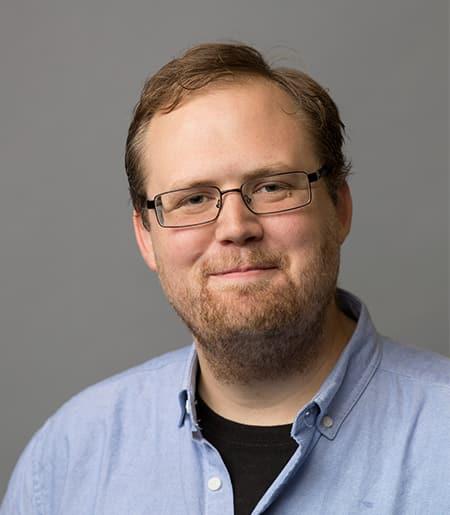
Assistant Professor
Cornell University
Abstract: Porous framework materials, including metal-organic frameworks (MOFs), are highly tunable materials with myriad potential applications ranging from chemical separations to gas storage to catalysis. This is due to the unusual local environment offered by their pores. Herein we will discuss how this tunability can be used to unlock new reactive species relevant to organic synthesis and catalysis, focusing on fluorination chemistry, which is critical to the pharmaceutical, polymer, and agrochemical industries. We will also draw inspiration from organic chemistry for the design of new chemical separations and electrocatalytically active materials.
Organic / ChemBio Seminar
Friday, February 10, 3:30 - 4:30pm, WEL 2.122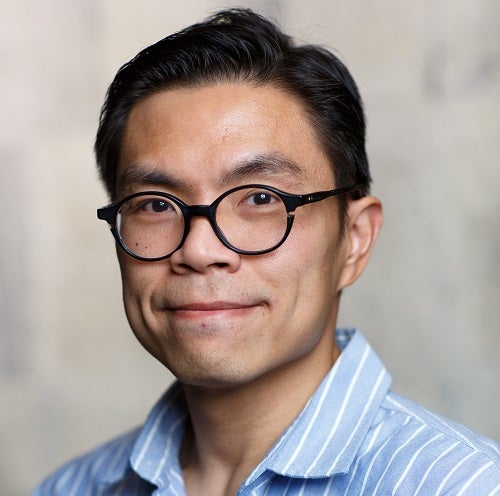
Associate Professor
Rice University
Abstract: By virtue of their unrivaled selectivity profiles, enzymes possess remarkable potential to address unsolved challenges in chemical synthesis. The realization of this potential, however, has only recently gained traction. Recent advances in enzyme engineering and genome mining have provided a powerful platform for identifying and optimizing enzymatic transformations for synthetic applications and allowed us to begin formulating novel synthetic strategies and disconnections. This talk will describe our recent efforts in developing a new design language in chemical synthesis that centers on the incorporation of biocatalytic approaches in contemporary synthetic logic. Case studies will focus on the use of this platform in the chemoenzymatic syntheses of complex natural products and also highlight how this platform could serve as a starting point to enable further biological and medicinal chemistry discoveries.
Analytical, Physical and ChemBio Seminar
Thursday, February 9, 3:30 - 4:30pm, WEL 2.122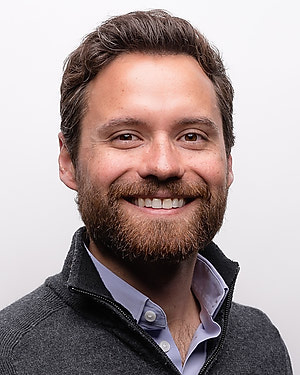
Assistant Professor
Johns Hopkins University - School of Medicine
Abstract: The ability to continuously monitor fluctuating concentrations of specific molecules in the body can drastically improve precision medicine by allowing the real-time correlation of dynamic molecular processes with health and disease. While this ability has been pursued from multiple directions, electrochemical strategies have been successful and commercializable platforms. For example, continuous glucose monitors have dramatically improved the therapeutic management and quality of life for Type 1 diabetics. Unfortunately, the enzymatic sensing used in glucose monitors is not applicable to a large number of clinically relevant biomarkers. This limitation significantly reduces the scope of dynamic biochemical processes we can probe to study healthy human physiology and disease. In response, my laboratory is developing in vivo electrochemical aptamer-based sensors, a platform that is generalizable to the highly specific sensing of arbitrary molecular targets and supports continuous molecular monitoring in the body. In this presentation I will discuss the current state-of-the-art of these sensors, and the challenges we are addressing to enable preclinical and clinical applications.
Inorganic / ChemBio Seminar
Wednesday, February 8, 3:30 - 4:30pm, WEL 2.122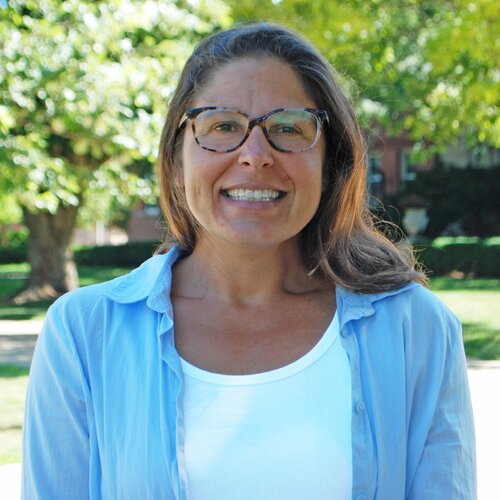
Assistant Professor
University of Illinois Urbana Champaign
Abstract: Reactions catalyzed by metalloenzymes underpin global geo- and biochemical cycles, biological energy conversion, transport, and biosynthetic processes of fundamental import to human and global health. The vast majority of these reactions follow a mechanistic paradigm in which rate-limiting conformational changes precede chemistry. This pattern suggests that such conformational gating mechanisms may be important in maintaining fidelity, control, and energy efficiency during thermodynamically and kinetically challenging transformations. To test this hypothesis, my lab is preparing and examining synthetic and artificial systems to serve as simplified models of conformationally gated control over metal ion reactivity. Using light to drive changes in ligand conformation, we exert control over the kinetics of electron transfer in synthetic copper coordination complexes. Using allosteric binding events to drive changes in protein macrostructure, we exert control over metallocofactor microenvironment in artificial metalloproteins. Finally, we use proton-coupled electron transfer to drive carboxylate shift reactions in biomimetic dinuclear cobalt complexes. All of these works are unified by the goal of (a) quantitating the kinetic and thermodynamic impact of conformational control, and (b) leveraging this impact in applications ranging from solar energy conversion, to biomedical imaging, and catalyst design.
Analytical, Physical and ChemBio Seminar
Thursday, January 26, 3:30 - 4:30pm, WEL 2.122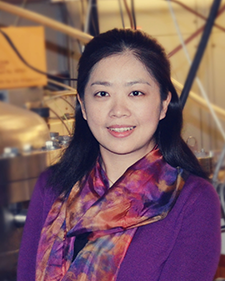
Assistant Professor
Texas A&M
Abstract: Microdroplet chemistry has received increasing attention for accelerated reactions at the air/solution interface in recent years. However, a large and significant category of reactions not demonstrated in microdroplets is the electrochemical reaction. This talk will discuss our progress toward microdroplet electrochemical strategies which include (i) a voltage-controlled interfacial microreactor that allows acceleration of electrochemical reactions for the first time; (ii) novel interfacial electrochemical reactions that address various long-standing isomeric problems in lipid isomer analysis; (iii) novel mass spectrometry screening platform that uses picomole-scale anodic corrosion of transition metal electrodes (e.g., Pd) to enable the rapid discovery of transition metal catalysis.
Welch Emerging Leaders in Chemistry Visitor Series
Wednesday, January 25, 3:30 - 4:30pm, WEL 2.122
Professor
University of British Columbia
Abstract: Carbon capture and utilization schemes require that CO2 captured from the atmosphere (or a point source) be released from the sorbent, and that the sorbent be recycled to capture additional CO2. Alkaline solutions such as KOH are effective at capturing CO2 through reactions that form (bi)carbonates, but the recovery of CO2 gas and hydroxide before CO2 electrolysis requires energy-intensive steps. We have solved this problem by designing an electrochemical reactor that converts bicarbonate “reactive carbon capture solutions” into carbon-containing products. In this presentation, I will show how this reactor couples CO2 utilization with upstream carbon capture, and also how it can perform better than the reactors fed with gaseous CO2 that are widely studied today..
Department Seminar
Monday, January 23, 3:30 - 4:30pm, WEL 2.122
Professor
University of Florida - Scripps Biomedical
Abstract: The Natural Products Discovery Center (NPDC) at UF Scripps Biomedical Research houses one of the world’s largest Actinobacterial Strain Collections, totaling ~125,000 strains. These strains, isolated over the last eight decades and from 69 different countries, encode natural product chemical and biological diversity that are impossible to reproduce in laboratory settings today. We have launched a large-scale genome sequencing campaign to establish the Actinobacterial Genome Database at NPDC. The sequenced genomes, together with the strains, will be made available to the scientific community to enable natural product training, research, and associated applications. Lessons learned from our natural products program over the years and preliminary analysis of the strains sequenced to date, benchmarking against the sequenced genomes available in public databases, will be presented to highlight how such a community resource could radically transform the current paradigm of natural products and drug discovery.
Organic Seminar
Friday, January 13, 3:30 - 4:30pm, WEL 2.122
Professor
Washington University - St. Louis
Abstract: RNA undergoes extensive modification through enzymatic post-transcriptional editing events. Adenosine-to-inosine (A-to-I) editing is one of the most widespread and impactful of these modifications and is catalyzed by adenosine deaminases acting on RNA (ADARs). Resulting inosines base pair with cytosine, essentially re-coding adenosine sites to guanine. Editing is essential for a number of processes including embryogenesis, neurological function, and innate cellular immunity. Dysfunctional editing is also linked to auto-immune diseases, neurological disorders, and several types of cancer. Despite this importance, numerous challenges remain for studying A-to-I editing, and our overall understanding of the locations and frequency of inosine sites remains limited. To address this challenge, we have repurposed EndoV from an RNA-cleaving enzyme into an RNA-binding protein and demonstrated its use for mapping of A-to-I editing sites and global profiling of RNA inosine content in cells and tissue samples.
Department Seminar
Wednesday, January 11, 3:30 - 4:30pm, WEL 2.122
Professor
Penn State University
Abstract: Archaea synthesize isoprenoid-based ether-linked membrane lipids, which enable them to withstand extreme environmental conditions, such as high temperatures, high salinity, and low or high pH values. In some archaea, such as Methanocaldococcus jannaschii, these lipids are further modified by forming carbon–carbon bonds between the termini of two lipid tails within one glycerophospholipid to generate the macrocyclic archaeol or forming two carbon–carbon bonds between the termini of two lipid tails from two glycerophospholipids to generate the macrocycle glycerol dibiphytanyl glycerol tetraether (GDGT). GDGT contains two 40-carbon lipid chains (biphytanyl chains) that span both leaflets of the membrane, providing enhanced stability to extreme conditions. How these specialized lipids are formed has puzzled scientists for decades. The reaction necessitates coupling two completely inert sp3-hybridized carbon centers, which has not been observed in nature. Here we use X-ray crystallography, high-resolution mass spectrometry, chemical synthesis, and biochemical analyses to show that the gene product of mj0619 from M. jannaschii, which encodes a radical S-adenosylmethionine enzyme, is responsible for biphytanyl chain formation during synthesis of both the macrocyclic archaeol and GDGT membrane lipids.
Seminar tabs are listed in the order of upcoming dates, followed by past seminars (most recent first).

This work is licensed under a Creative Commons Attribution-NonCommercial 4.0 Generic License.